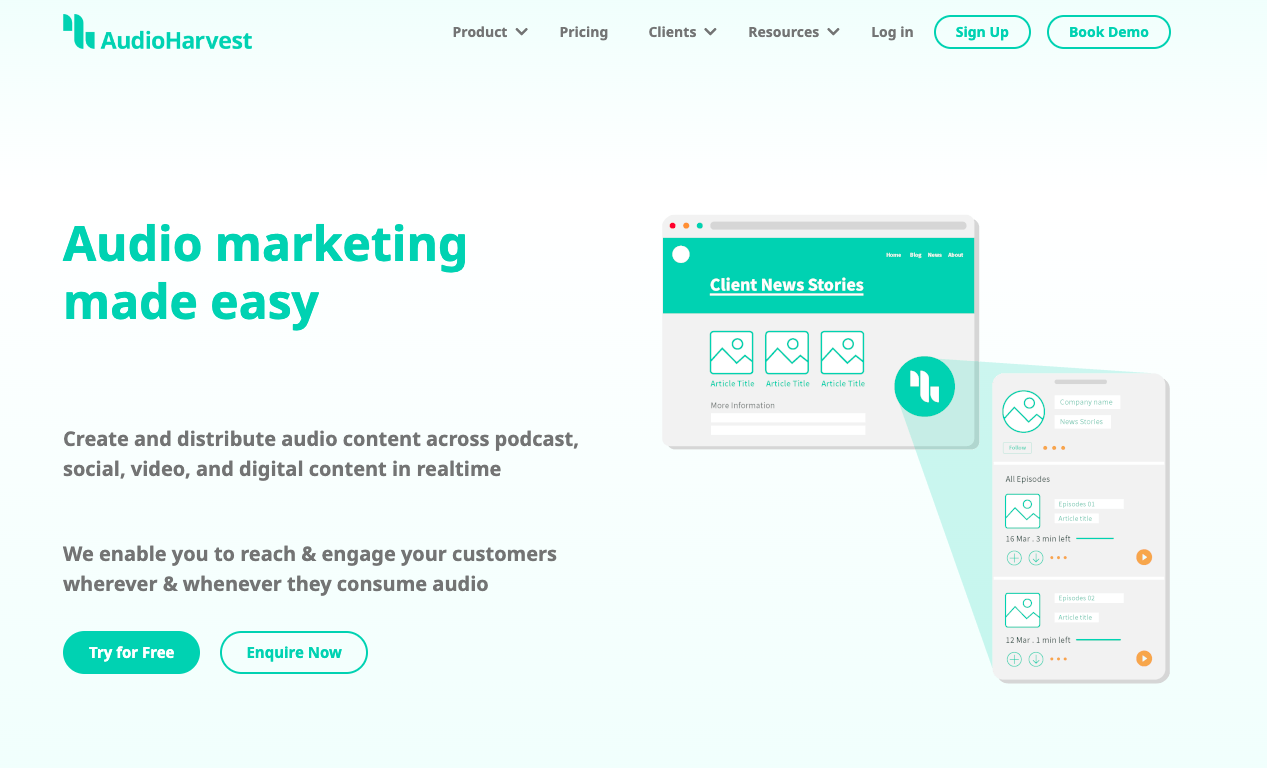The emergence of voice AI technology is now a major presence in the business, communications and cultural landscape in the media landscape.
Until recently the take up of AI powered audio has occurred below the radar but has been significant, with thousands of companies leveraging the AI-based audio technology and millions of people now listening to this type of audio communication with what was little or no media coverage and very little awareness from mainstream consumers. But with the emergence of Chat GPT and the take up of Voice AI has completed changed this for consumers, businesses and mainstream culture alike.
Voice AI technology has now enabled the creation of amazing human-sounding voices through the development and evolution of AI and Neural technology. Due to the ease of use and quality of these voices’ brands are now engaging with this technology to support both their company’s customer-facing services and their wider communication objectives. Whether it be for customer communications. via bots or marketing communications via podcast or onsite audio players, businesses are applying AI audio technology in a raft of sales and marketing contexts.
Alongside the quality of the voices, just listen here, the value businesses see in this technology is the ability to create always-on audio communications that are highly scalable and can seamlessly be distributed in realtime, unlike recorded audio, Voice AI audio can be created in real time and is constantly improving the way it can interact and engage audiences through the AI.
The implications of this technology, not only from a communications point of view but also from a business and societal point of view is a key question that will need to be addressed. It is therefore vital that the market is educated on how this technology works and what the implications of this technology may be both from a positive and negative point of view.
The AI audio technology itself is, as you would expect driven by the big global technology companies such as Amazon - Polly, and Google - Voice Essentially AI audio technology involves not only creating the sounds but also how the sounds fit together. The result of these initial sound forms is then processed to generate the actual speech waveform with the result being a voice that not only replicates the sounds but also the intonations and rhythms of a human voice as well as delivering a natural conversational style of speech. Brands can literally choose from hundreds of voices and even create their own personalized voice if they so choose.
For businesses, understanding how best to apply this technology to their business, in an appropriate and beneficial manner, is vital. The most well-known example of this is Voice BOTs which can help customers get the feedback and information that they require, whilst businesses have an always-on audio service that is highly cost-efficient and less labour-intensive. The key here, as with all AI audio experiences is in ensuring the quality of the experience matches the customer’s needs. So careful deployment and testing needs to be carried out.
The emergence of Voice AI audio technology has also continued to evolve and has now moved rapidly into more mainstream marketing communications. With businesses and brands across a wide variety of sectors are now using audio technology to support their audio marketing communications activity. For example, many sites now have an audio version of their company website, you can listen here to a live example, which not only makes the site much more accessible but also gives everyone the choice of either reading or listening to the article. This has also now extended to sharing Voice AI communications with the deployment of branded podcasts such as the global technology provider Hewlett Packard Enterprise, which uses AI voices to share thought leadership pieces and educate and inform the industry leaders of today and tomorrow.
At AudioHarvest we are seeing rapid take-up of real-time audio creation and distribution platforms. As it enables clients to create real-time, an always-on audio solutions across podcasts, the web, and social. Businesses can reach and influence their customers through an always-on audio content creation and distribution platform, that reaches a brand’s target audience whenever and wherever they consume audio. The ability to also convert onsite content into Voice AI means that clients can now create a vast range of different audio experiences that enable them to have both relevant and diverse communications with their target audiences.
Voice AI technology is already creating real benefits for businesses and consumers alike and we are just at the beginning of the emergence of this technology. It will therefore be fascinating to see where this new technology takes communications, business, and society next and how it is applied in real-world situations. The early signs are very good as consumers like the voices and the fact that the technology is non-invasive in terms of their data privacy. This can be seen in the rapid take up and use of this technology across businesses and consumers alike.
For the future, it is important that this is no longer a silent revolution as we need to ensure we share the benefits of this technology and that it is applied in an appropriate and responsible way through clear industry-wide initiatives.
Contributor post by Dominic Finney connect on:







